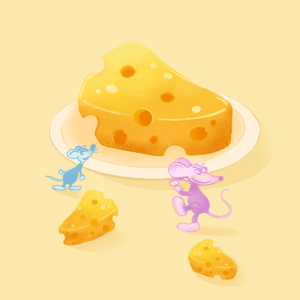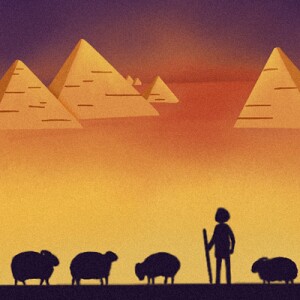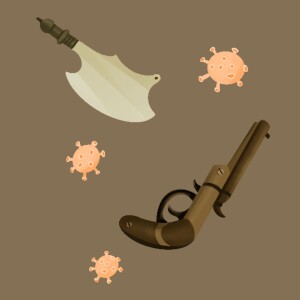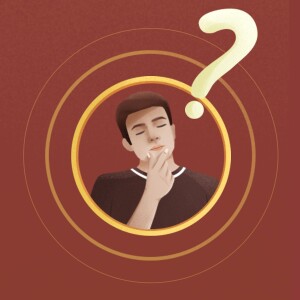Episodes

Sunday Jun 25, 2023
Sunday Jun 25, 2023
Chapter 1:What is a book Rich Dad Poor Dad about
"Rich Dad Poor Dad" is a book written by Robert Kiyosaki, which details his financial journey and the lessons he learned from his two "dads." One dad (his biological father) was highly educated but struggled financially, while the other dad (his best friend's father) lacked formal education but was incredibly wealthy.
The book explains how Kiyosaki learned about money management and investing from his "rich dad," who taught him to think differently about money and assets. He shares his personal experiences with investing in real estate and starting businesses, as well as his views on the importance of financial education and building passive income streams.
Chapter 2: a book Rich Dad Poor Dad Review
Rich Dad Poor Dad is a bestselling personal finance book written by Robert Kiyosaki. The book highlights the importance of financial education and how it can help individuals become financially independent.
The author shares his experiences growing up with two dads - his real father (poor dad) who was highly educated but struggled to make ends meet, and his best friend's father (rich dad) who was a successful businessman without a college degree. Through their contrasting views on money and investing, Kiyosaki learned valuable lessons that he shares in this book.
The book is divided into ten chapters, each covering different aspects of personal finance. Kiyosaki emphasizes the importance of financial literacy, investing, and building assets that generate passive income. He argues that traditional education does not teach us enough about personal finance and encourages readers to take control of their financial future.
One of the key takeaways from the book is the concept of "pay yourself first" - setting aside a portion of your income each month for investments before paying for expenses. Kiyosaki also stresses the importance of taking calculated risks and not relying solely on a paycheck.
Overall, Rich Dad Poor Dad is an easy-to-read book that provides practical advice on building wealth and achieving financial freedom. While some of the concepts may be controversial or oversimplified, the book has inspired many to take action towards their financial goals. I would recommend this book to anyone looking to improve their financial knowledge and gain a new perspective on money.
Chapter 3:Rich Dad Poor Dad main characters
The two main characters in the book are:
Rich Dad - The father of one of Kiyosaki's childhood friends, who is a successful entrepreneur and investor. Rich Dad teaches Kiyosaki about the importance of financial education, building assets, and creating passive income streams.
Poor Dad - Kiyosaki's biological father, who has a stable job as an educator but struggles financially. Poor Dad believes in working hard and saving money, but he does not have a good understanding of how to create wealth or build assets.
Through the contrasting experiences and advice of these two fathers, Kiyosaki provides readers with valuable lessons on how to achieve financial independence and build prosperity.

Wednesday Jun 21, 2023
Wednesday Jun 21, 2023
Capítulo 1: ¿Dónde se desarrolla Quién se ha llevado mi queso ?
Quién movió mi queso es un libro corto escrito por Spencer Johnson, que cuenta la historia de cuatro personajes que viven en un laberinto y buscan queso para alimentarse y ser felices.
En el libro no se menciona una ubicación ni un marco temporal concretos, pero parece estar ambientado en la época moderna, ya que los personajes utilizan un lenguaje contemporáneo. El trasfondo de la historia es un laberinto ficticio, que podría interpretarse como una metáfora de los retos y obstáculos que se encuentran en la vida y el trabajo.
Los personajes principales son dos ratones llamados "Sniff" y "Scurry", así como dos personitas llamadas "Hem" y "Haw". Estos personajes representan diferentes actitudes ante el cambio y cómo los individuos lo afrontan en sus vidas.
En general, el libro es una sencilla parábola sobre la importancia de adaptarse a los cambios y mantener la mente abierta a las nuevas oportunidades que puedan surgir.
Capítulo 2: Spencer Johnson
Spencer Johnson fue un conocido autor y conferenciante estadounidense, famoso por sus libros de autoayuda y desarrollo personal. Nació el 1 de enero de 1938 en Mitchell, Dakota del Sur, Estados Unidos, y falleció el 3 de julio de 2017.
Johnson se formó en la Universidad del Sur de California, donde se licenció en Psicología, y posteriormente se doctoró en Medicina por el Real Colegio de Cirujanos de Irlanda. Sin embargo, decidió no dedicarse profesionalmente a la medicina, sino a escribir y dar conferencias.
Algunos de los libros más populares de Johnson son "¿Quién movió mi queso?", "El gestor de un minuto" y "El presente". Estos libros han vendido millones de ejemplares en todo el mundo y se han traducido a muchos idiomas.
A través de sus libros y discursos, Johnson pretendía inspirar a las personas a mejorar sus vidas mediante el crecimiento y el desarrollo personal. Creía que cambiando nuestros pensamientos y hábitos podríamos alcanzar un mayor éxito y felicidad tanto en nuestra vida personal como profesional.
Capítulo 3:Quién se ha llevado mi queso Citas
"Cuanto antes sueltes el queso viejo, antes encontrarás queso nuevo".
"¿Qué harías si no tuvieras miedo?"
"Huele el queso a menudo para saber cuándo se está poniendo viejo".
"Las viejas creencias no te llevan al queso nuevo".
"Si no cambias, puedes extinguirte".
"Cuando vas más allá del miedo, te sientes libre".
"Notar pronto los pequeños cambios te ayuda a adaptarte a los cambios más grandes que están por venir".
"El movimiento en una nueva dirección te ayuda a encontrar un nuevo queso".
"Es más seguro buscar en el laberinto que permanecer en una situación sin queso".
"El miedo que dejas que se acumule en tu mente es peor que la situación que realmente existe".

Tuesday Jun 20, 2023
Tuesday Jun 20, 2023
Chapter 1:Who Moved My Cheese why classic
The book revolves around four characters who live in a maze and rely on cheese for their survival, both as a source of food and as a symbol of happiness and success.
The book became a classic because it provides a powerful metaphor for dealing with change in life. It inspires readers to embrace change, overcome fear, and learn new skills to adapt to changing circumstances. The lessons taught in this book are applicable to all aspects of life, including personal relationships, business, and career development.
Moreover, the book's simplicity and brevity make it easy to read and understand, even for those who don't enjoy reading. Its relatable characters and engaging storyline also make it enjoyable and memorable. These qualities have contributed to the book's continued popularity decades after its initial publication.
In conclusion, Who Moved My Cheese is a classic book because of its timeless lessons, universal appeal, and accessibility to a wide range of readers.
Chapter 2: Summary of a book
Who Moved My Cheese
Who Moved My Cheese?" is a short and easy-to-read book written by Spencer Johnson, M.D. The book is a parable that tells the story of four characters who live in a maze and are on a quest to find cheese.
The four characters are two mice named Sniff and Scurry, and two "little people" named Hem and Haw. They all have different personalities, strengths, weaknesses, and ways of dealing with change.
At the beginning of the story, the four characters live in a maze and have found a great source of cheese, which they enjoy every day. However, one day, they discover that the cheese has disappeared, and they are left without their usual nourishment.
Sniff and Scurry quickly adapt to the change and leave to find new cheese, while Hem and Haw refuse to accept the change and stay behind, hoping that the cheese will magically return.
Hem and Haw go through different stages of denial, anger, blame, fear, and paralysis, before realizing that they need to take action and move on. Haw ventures out into the maze and experiences different encounters, learns valuable lessons, and finds new sources of cheese.
The book teaches readers the importance of being adaptable to change, taking risks, facing fears, learning from mistakes, and moving forward. It also provides practical tips and insights on how to deal with change in personal and professional life.
Chapter 3:Who Moved My Cheese
Meaning
The "cheese" in the story represents anything we value, such as a job, relationship, or material possession, while the "maze" represents the journey we take to find what we want.
The book suggests that change is inevitable, and those who are willing to adapt and be flexible will be more successful than those who resist it. The story provides valuable insights into how individuals can cope with change, overcome fear, and achieve their goals. Overall, the book encourages readers to embrace change and be proactive in seeking new opportunities.

Monday Jun 19, 2023
Monday Jun 19, 2023
Chapter 1:The Alchemist why classic
Firstly, the book has been widely popular since its publication in 1988 and has sold over 65 million copies worldwide. It has been translated into over 80 languages and has been praised for its simple yet profound storytelling.
Secondly, the book's message of following your dreams and discovering your destiny has resonated with readers of all ages and backgrounds. The Alchemist inspires readers to pursue their passions and take risks in life to achieve their goals.
Finally, the book's themes of spirituality, mysticism, and self-discovery have made it a favorite among those interested in philosophy and personal development. The author uses allegory and symbolism to explore complex ideas about life, love, and the universe, making it a thought-provoking read that leaves a lasting impression on readers.
In conclusion, The Alchemist is a classic because of its widespread popularity, universal message, and timeless themes that continue to inspire readers across generations.
Chapter 2: Summary of The Alchemist
The Alchemist by Paulo Coelho is a timeless and inspirational novel about the journey of self-discovery and the pursuit of one's dreams. The story follows Santiago, a shepherd boy from Andalusia, who embarks on a journey to Egypt in search of treasure that he saw in his dream.
On his journey, Santiago meets many people who help him along the way and teach him important life lessons. He also encounters obstacles and challenges that test his faith, courage, and determination.
Throughout his journey, Santiago learns to trust his instincts and follow his heart, even when it seems impossible or risky. He discovers the power of love, the importance of listening to the signs of the universe, and the beauty of living in the present moment.
As Santiago approaches his destination, he realizes that the true treasure was not what he was looking for but rather the journey itself, the lessons he learned, and the person he became. In the end, Santiago returns home with a new perspective on life and a deeper understanding of himself and the world around him.
The Alchemist is a beautiful and profound book that encourages readers to pursue their dreams and embrace the unknown with faith and optimism. It is a reminder that everything is possible if we have the courage to follow our hearts.
Chapter 3:The Alchemist Meaning
The Alchemist is a novel written by Paulo Coelho that tells the story of a shepherd boy named Santiago who embarks on a journey to find his personal legend, or his life's purpose. Along the way, he encounters various obstacles and learns valuable lessons about following his dreams.
The meaning of The Alchemist can be interpreted in different ways, but at its core, it is a story about self-discovery, perseverance, and the power of the universe to help us achieve our goals if we have faith and take action towards them.
One of the main themes of the book is the idea that everyone has a personal legend, or a unique purpose in life that they must fulfill. This purpose may not be immediately clear, and achieving it may require taking risks and overcoming challenges, but ultimately, it is what gives our lives meaning and fulfillment.
Another important theme is the concept of the "language of the world," which refers to the idea that everything in the universe is interconnected and communicates with each other in its own language. By learning to listen to this language and follow our intuition, we can align ourselves with the universe's plan for us and find our way to our personal legends.
Overall, The Alchemist is a powerful and inspiring book that encourages us to pursue our dreams and trust in the universe to guide us along the way.

Monday Jun 05, 2023
Monday Jun 05, 2023
The Laws Of Human Nature
The Laws Of Human Nature Full Book Introduction
The Laws of Human Nature, written by Robert Greene, is a comprehensive guide to understanding the complexities of human behavior. Through the lens of evolutionary psychology, Greene delves into the fundamental drives that shape our actions and interactions with others. By analyzing the interplay between our inherent traits and external influences, The Laws of Human Nature helps readers gain insight into their own behavior and the behavior of those around them.
Author : Robert Greene
Robert Greene is an American author and speaker known for his books on strategy, power and seduction. He is the author of The 48 Laws of Power, The Art of Seduction, The 33 Strategies of War, and The Laws of Human Nature. His books combine history, philosophy, and psychology to provide readers with deep insight into power and influence.
Overview | Chapter 1
Hi, welcome to Bookey. Today we will unlock the book The Laws of Human Nature.
Are you intrigued by the mysteries of human behavior? Are you looking for answers to why we do the things we do? If so, you won’t want to miss out on Robert Greene’s The Laws of Human Nature. This book offers readers an insightful and groundbreaking new approach to understanding ourselves and others.
The author of the book, Robert Greene, is a renowned American author, entrepreneur, and public speaker who is best known for his books on strategy, power, and mastery. He has written five internationally bestselling books. His work has been translated into more than 30 languages and has sold over two million copies worldwide. In addition to his books, Greene has written regularly for Esquire, Playboy, and other publications. He also has an extensive background in the entertainment industry and has written screenplays and television projects. With his writing, Greene has sought to provide insight into the fundamentals of power, strategy, and success.
Let's get back to Greene's work, The Laws of Human Nature, published in 2018. It is a comprehensive exploration of human behavior and the psychological underpinnings of how we interact with the world around us. Greene draws from a variety of sources including philosophy, literature, psychology, and neuroscience, to challenge accepted wisdom and explore the complex dynamics at play when it comes to our relationships and interactions. From understanding the inner motivations of others to mastering the art of self reflection, The Laws of Human Nature provides readers with an insightful look into the motivations and processes that influence how we live our lives.
In this book, Greene examines the complexities of human nature through an analysis of our motivations, our desires, and our fears. He delves into the effects of our insecurities, our penchant for self deception, and our internal state of mind on the decisions we make. He also addresses the power of our perceptions, our judgments, and our willingness to accept certain realities. By understanding the underlying motivations and psychological processes that play a role in our lives, readers gain a better understanding of why we act in certain ways and how we can better manage our emotions.
The Laws of Human Nature is both a practical guide for those seeking to gain a greater understanding of the intricate inner workings of the human mind. By looking beneath the surface and exploring the nuances of human behavior, the book provides readers with a comprehensive understanding of the myriad factors that shape our identities, our relationships, and our overall life experience. Through its various insights, it provides readers with the necessary tools to better comprehend and navigate the often mysterious realm of human nature.
In a word, The Laws of Human Nature is an essential read for anyone looking to make sense of the complex and fascinating world of human behavior. It is packed with timeless wisdom that will leave you with new insights and a more profound appreciation for yourself and the people around you. Listen to our book summary now and take a journey that will help you gain a better understanding of who you are and how you interact with the world.
Next, we will discuss the book in five parts to help you fully understand the nature of human beings.
In Part One, we will discuss the unrealistic self images human beings have about themselves.
In Part Two, we will explore how human beings hide their true selves.
In Part Three, we will talk about how people behave differently in groups.
In Part Four, we will discuss how people view the world irrationally.
In Part Five, we will explore the wrong things people want to have and how to establish meaningful life purposes.

Monday Jun 05, 2023
Monday Jun 05, 2023
Unlimited Power
Unlimited Power Book Introduction And Notes
Unlimited Power, written by Tony Robbins, is a groundbreaking self-help book that encourages readers to take control of their lives by transforming their mental and emotional states. Through the use of neuroscience and psychology, the author explains how we can break free from the limiting beliefs and habits we have developed over time and ultimately empower ourselves to live life more fully.
Author : Anthony Robbins
Anthony Robbins is an American author, life coach, and philanthropist. He has written several books on personal development and business, such as Awaken the Giant Within, Unlimited Power, and Money: Master the Game. He has also created a series of educational and self-help audio and video programs, seminars, and infomercials.
Overview | Chapter 1
Hi, welcome to Bookey. Today we will unlock the book Unlimited Power.
Are you looking to unleash your unlimited potential and take charge of your professional and personal life? Then you need to get your hands on a copy of Unlimited Power! This best selling book not only shows you how to realize your potential but also helps you make the most of your existing knowledge and turn it into lasting success.
Written by Anthony Robbins, Unlimited Power explores the science of personal achievement and introduces readers to the strategies used by the world’s most successful people. From finding the courage to change to harnessing the power of emotions and mastering communication, this book focuses on the fundamentals of creating and enjoying a life of abundance.
To begin with, let’s learn something about the author, Anthony Robbins. Anthony Robbins is a well known motivational speaker, author, and philanthropist known for his self help books and seminars. He began his career as a personal development coach in the 1980s and has since become one of the most influential figures in the self-help industry. Robbins is best known for his dramatic and energetic seminars, as well as his numerous bestselling books, which have been translated into multiple languages and have sold millions of copies worldwide. Robbins is also actively involved in philanthropy, having founded several charitable organizations. Throughout his career, he has received numerous accolades and awards for his work, including being named one of Time magazine's Top 25 Most Influential Business Gurus.
In the book, Robbins tells fascinating stories of ordinary people who were able to use the science of success to achieve extraordinary goals. Through faith, courage and sheer determination, these people prove that there is no limit to what a person can accomplish if they set their mind to it. The stories in the book serve as important reminders that ordinary people can, and do, make incredible changes in their lives.
At its core, Unlimited Power is about personal transformation. Through step-by-step instruction, Robbins shows readers how to break the chains of mediocrity and gain control over their lives. He demonstrates how to develop self confidence and self esteem, set and achieve goals, and use the power of influence to improve relationships.
In addition to teaching readers how to become successful, Unlimited Power helps readers learn to appreciate and embrace the present moment. Through vivid accounts of success, Robbins reminds readers that each moment of their lives is full of potential waiting to be seized.
Unlimited Power is a timeless book that has become a cornerstone of the personal growth and self help genres. It has inspired countless people to make positive changes in their lives and has impacted the lives of many in powerful ways. Robbins’ words continue to inspire readers to tap into their potential, pursue their dreams and make the most out of life.
Next, we will pick out the five most crucial kinds of power in this book, which contribute to your personal development and happiness.
In Part One, we will discuss the power of the mind.
In Part Two, we will explore the power of emotions.
In Part Three, we will talk about the power of communication.
In Part Four, we will explore the power of goals.
In Part Five, we will discuss the power of action.

Friday Jun 02, 2023
Friday Jun 02, 2023
Leaders Eat Last
Leaders Eat Last Book Introduction And Notes
Some enterprises perform well in the short-term but, in the long-term, end up failing. While this unfortunate scenario happens to some branches around the world, other can miraculously grow their stock prices in over 1200% increase in stock prices. Why does that happen? What is the difference between those that succeed and those who fail? Many enterprises regard short-term rises in earnings as a sign of success, but overlook long-term growth and sustainability. So, how can we inspire employees with ideals of dedication and cooperation whilst keeping up with an extraordinary performance? This book, used as training material by top organizations including Microsoft, American Express, the US Department of Defense, and the United Nations, will open the door to a sustained increase in performance in your teams.
Author : Simon Sinek
Simon Sinek is known as the pathfinder of leadership philosophy. His pioneering "selfish & selfless chemicals" leadership rule initiated the integration of human biology principles into leadership philosophy. Sinek also put forward other important leadership principles to leaders all around the world, including the “Golden Circle" and the "Circle of Safety". His leadership speech streamed on TED has over 54.77 million views, and ranks among the top videos of the platform.
Overview | Chapter 1
Hi, welcome to Bookey. Today we will unlock the book “Leaders eat last: Why some teams pull together and others don’t”.
If you were to visit the United States Marine Corps, you will notice an interesting fact: the local restaurant has a different dynamic. Many organizations opt to serve their leaders or their top-tier employees before anyone else in the team. However, in the American Marine Corps, junior employees are served first, before the group of senior leaders, who are usually the last ones to get a meal. Surprisingly, there is no standing order which dictates this behavior, the habit is just a product of the strong leadership culture of the foundation.
Exceptional leaders genuinely care about their employees, as they understand that they are the ones who put the power in their hands. Good leaders put others before themselves, sacrifice personal interests, and advance the interests of the organization, gaining true respect from their peers and strengthening their leadership as a consequence.
The principle of "leaders eat last" is not only applicable to the Marines. If typical enterprises or organizations can blend this concept into their own corporate cultures, they will also be capable of building and sustaining a well-motivated team. However, in reality, we will see that the "kick the cat" effect often exists in many companies. The term “kick the cat” refers to a chain reaction where those who rank higher in a company vent dissatisfaction to people – or employees - considered inferior. When the upper-level group of employees of an enterprise is under extreme pressure in an enterprise, they tend to pass the pressure to the middle level workers. Following the cycle, the pressure will then end in the group of employees with the lowest level of knowledge. When this group is under duress, working becomes a burden for them. The entire working environment becomes a "pressure barrel", where the employees at the bottom of the “barrel” feel exhausted and suffocated. The results are clear-cut: loss of employees and following company crises.
How can an enterprise on the verge of bankruptcy revitalize its fortune? How can leaders inspire employees' passion for work? How can we functionally improve a company's efficiency? The book "Leaders Eat Last" offers fascinating insights about the creation of a winning company culture and helps people to become outstanding leaders.
As the best training material for team management, this book integrates base human survival principles into leadership philosophy. The "selfish & selfless chemicals" leadership rule tells readers how to establish a "Circle of Safety" that leads the way to a sense of security. This “circle” is powerful enough to inspire employees with ideals of dedication, cooperation, promoting stronger and more effective team performance. The author, Simon Sinek, believes that positive long-term outcomes can only be achieved when members of an organization share common values and are sincerely respected in their work environment. Even in the face of adversity, a team in a “Circle of Safety” will eventually overcome obstacles, increasing the business’ chances of survival.
Next, we will take a look at the upcoming three parts:
Part One: How to improve team cohesion and create a "Circle of Safety"
Part Two: How to relieve employees' stresses and maintain the "circle of safety"
Part Three: How to safeguard the "Circle of Safety" in the face of challenges and temptations

Friday Jun 02, 2023
Friday Jun 02, 2023
I Am Malala
I Am Malala Book Introduction And Review
When Malala Yousafzai was born in Pakistan, she was a normal girl, but she went on to resist terrorists and advocate for women’s right to education. As a result, she was shot in the head by armed militants at the age of 15, but she miraculously survived. Her story moved the world, and she won the 2014 Nobel Peace Prize at only 17 years old. How did she have the superhuman courage to face death, and how did she maintain such strong convictions in her fight for equality? Let’s experience this brave and visionary tale together.
Author : Malala Yousafzai, Christina Lamb
Malala Yousafzai, born in 1997 in Pakistan, became well-known when she published an article on the BBC website at age 11 that argued for children’s and women’s rights to education. When she won the 2014 Nobel Peace Prize, she was only 17 years old, making her the youngest person to ever win the prize. Christina Lamb is a well-known British war journalist who started covering Pakistan and Afghanistan in 1987. She has been named Britain’s Foreign Correspondent of the Year five times, and she has received Europe’s highest honor for war correspondents, the Prix Bayeux-Calvados.
Overview | Chapter 1
Hi, welcome to Bookey. Today we will unlock the book, I Am Malala: The Story of the Girl Who Stood Up for Education and Was Shot by the Taliban.
In the beginning of the 21st century, most people living in peaceful countries enjoyed comfortable lives, and they saw the right to education as a given. They could hardly imagine that, under the same sky, many corners of this world were full of war. The dark places were overrun with fear. Citizens of those countries were being tossed between endless oppression and torment, and countless children were yearning for education and equal treatment, but they struggled in vain. They may have been impacted by poverty, illness, or war, but all of them wanted the world to hear their voices, and the author of this book, Malala Yousafzai, was one of them.
Malala was born to a normal family in the Swat Valley of Pakistan. When frequent terrorist activity broke out in Pakistan, and an anti-government organization, the Taliban, controlled their small village in the Swat Valley, she refused to be silent. Instead, she stood up to her oppressors and fought for the right to an education. She was regarded as the terrorist organization’s enemy, a label that put her life in jeopardy. She was shot by a terrorist at the age of 15. After miraculously surviving, she became the youngest person to ever win the Nobel Peace Prize at the age of 17.
I Am Malala, the autobiographical account of these experiences, was on the New York Times best-seller list for over a year. In the book, she reveals a terrorist organization’s evil deeds and darkest facets, giving an account of her extraordinary struggle to secure women’s right to education. Time magazine commented, “In trying to silence this Pakistani schoolgirl, the Taliban amplified her voice. She is now a symbol of the struggle for women’s rights all over the world.”
Malala mentions in her book that there are 57 million children in the world who have not been able to attend elementary school, and Pakistan is one of the countries where this problem is most serious. In 2014, the World Bank released a report that showed there were 7 million people in Pakistan who were deprived of education, and two thirds of those people were women. Most of the people who have lost out on schooling don’t have basic arithmetic, reading, or other language skills.
A UNESCO survey found that the main barriers that stand between children and education are gender, geography, poverty, and armed conflicts, those conflicts being one of the top reasons that students are unable to attend school. Among elementary-age children that are unable to attend school, over one third of them live in areas impacted by war or similar conflicts.
Maybe we have no way to imagine how people live in Pakistan, especially in the areas and times most heavily impacted by conflict and terrorism. When their lives are hanging in the balance, do they still have dreams? When facing hardships, do they choose to be resigned to their fate, or do they stand up and fight? Do the children learn from their life experiences instead of learning from teachers? All of these questions will be answered after we have finished listening to this bookey.
In this bookey, we will see what we can truly gain from Malala Yousafzai in three parts:
Part One: A cry for freedom in the face of Taliban terrorists;
Part Two: A struggle for education under the oppression of the Taliban;
Part Three: A call for world peace after being attacked by the Taliban.

Friday Jun 02, 2023
Friday Jun 02, 2023
Guns, Germs, And Steel
Guns, Germs, And Steel Book Introduction And Review
Why did the inhabitants of the Eurasian continent conquer the American natives, instead of the other way around? Why are wheat, maize, and livestock like pigs and cows found in certain regions of the world and not in others? This book reveals the facts behind the broader environmental elements that have helped shaped the world’s history, thereby effectively refuting anthropological theories based on racism. It also records the underlying causes of the current situation and the many injustices visible in our modern world. This book can be considered as a true history of all the races and ethnicities of the world.
Author : Jared Diamond
Jared Diamond is a polymath spanning a wide range of fields including anthropology, ecology, physiology, and evolutionary biology. He is a current professor of geography and former professor of physiology at University of California, Los Angeles (UCLA). He is also a member of the American Academy of Arts and Sciences and the National Academy of Sciences, as well as an editorial board member of Skeptic magazine. Dr. Diamond has received a MacArthur Foundation Genius Award, in addition to research prizes and grants from the National Geographic Society. He is well-known for his popular science books such as The Third Chimpanzee; Guns, Germs, and Steel; Collapse; and Why Is Sex Fun?
Overview | Chapter 1
Hi, welcome to Bookey. Today we will unlock the book Guns, Germs, and Steel: The Fates of Human Societies.
In 1972, the author, Jared Diamond, was walking along the beach in New Guinea when a local friend Yali asked him, “Why is it that you white people developed so much cargo and brought it to New Guinea, but we black people had little cargo of our own?”
To his surprise, Dr. Diamond found it difficult to answer this seemingly simple question. Why is that so?
Yali’s question may seem like a simple question about the difference in the production of goods, but his question actually contains many hidden caveats. Why, for example, did the people of New Guinea still seem to be “living in the Stone Age” two centuries ago, while the Europeans already had a wide variety of inventions such as steel axes, gunpowder, garments, soft drinks, and umbrellas? Taking a closer look at the difference in lifestyles of these two groups of people, we may connect it to the broader spectrum of disparities in the modern world and ask: why is it that people of Eurasian origin (including those who have settled in North America) control most of the world’s wealth and power today? Moreover, some ethnic groups, like the indigenous peoples of Australia, the Americas, and Sub-Saharan Africa, no longer hold their homeland but have been subjugated or even wiped out.
Around the start of the 16th century, European countries began to occupy territories all over the world. Why was it the Eurasians who conquered and subjugated native peoples, rather than the native Americans, Africans, and Australian aborigines, conquering or subjugating the Eurasians?
Some people claim that around that time, Eurasia already had many advanced empires with all kinds of technological and weapons advantages that people in other parts of the world did not. It was these technological and political differences that led to the inequalities that we see in the world today. While this is an obvious answer, the deeper question remains as to what caused these differences in the first place.
Historically, certain groups have claimed that Europeans are naturally more intelligent and genetically superior to other races. Of course, today we know that such an explanation is not only racist and offensive, but also factually incorrect.
So, what is the true cause of these differences? In the years since his conversation with his friend, Dr. Diamond has conducted significant research into human evolution, history, and language, and he published Guns, Germs, and Steel twenty-five years later as an attempt to answer Yali’s question.
Like The Third Chimpanzee, which we unlocked in a previous bookey, Guns, Germs, and Steel has also won the Royal Society’s Science Book Prize for Dr. Diamond. In addition, it was a New York Times bestseller and has won the Pulitzer Prize for general non-fiction. The book reveals some broad environmental factors that have benefitted the historical development of certain regions of the world, thereby debunking anthropological theories based on race and racial superiority. At the same time, it offers possible causes for many of the inequalities that we see in the world today. It can be regarded as a true history of the peoples of the world.
In this bookey, we will introduce the book in three parts:
Part 1: Guns, germs, and steel;
Part 2: Time, flora and fauna, and geographical barriers;
Part 3: China, Oceania, and Africa.

Thursday Jun 01, 2023
Thursday Jun 01, 2023
Start With Why
Start With Why Book Introduction And Notes
Why was Steve Jobs able to make Apple a worldwide craze? Start With Why reveals that the secret lay in Jobs using The Golden Circle, always asking WHY before anything else. This book introduces the concept of The Golden Circle, and through ample examples, explains why The Golden Circle is so effective, the process of using it, and how to increase your ability to exert influence through The Golden Circle.
Author : Simon Sinek
Simon Sinek is a British-American author and inspirational speaker, as well as a prominent voice in leadership theory. He became famous due to his discovery of The Golden Circle. He has served as an advisor for numerous leaders and organizations, from SMEs and startups to large enterprises such as Microsoft, to non-profit organizations, and has even advised governments and politicians. His views are frequently quoted in major newspapers and magazines. His other works include Leaders Eat Last among others.
Overview | Chapter 1
Hi, welcome to Bookey. Today we will unlock the book Start With Why: The Golden Circle that Jobs followed to make Apple a global success.
Everyone knows Apple. In 1976, Steve Jobs and Steve Wozniak founded Apple Computer in California. In its first year of business, selling only one product, Apple made a million dollars in revenue. By year two, their sales had soared to 10 million dollars. And by the sixth year, Apple had become a billion-dollar company with over 3000 employees. In April 2012, Apple became the world’s biggest company, with a market value of over 520 billion.
Why was Apple able to achieve such enormous success? You could say it’s because Apple’s products are perfect, their advertisements are full of innovation, and consumers everywhere love them. However, the author of Start With Why, Simon Sinek, thinks that the reason Apple was able to succeed was in fact because its founder used a brand new perspective to look at personal computers, and dared to challenge traditional market views. He did this by first asking WHY. While the majority of companies were still thinking that the biggest market for computers lay in business use, Apple envisioned that it would become a commodity for everyone and not simply a tool that sits on an office desk. It's exactly because Apple insisted on asking WHY before anything else, that they were able to achieve non-stop innovation and push aside these traditional views, and it was this very concept that won Apple widespread long-term trust and support from consumers.
The book we'll unlock for you today, Start With Why, provides a deep analysis of the secret to Apple becoming a global success – The Golden Circle, or in other words, asking WHY before anything else.
Now, let’s learn to understand this principle by looking at three separate areas:
Part One: Why The Golden Circle is so effective
Part Two: How to use The Golden Circle
Part Three: Using The Golden Circle to win support








